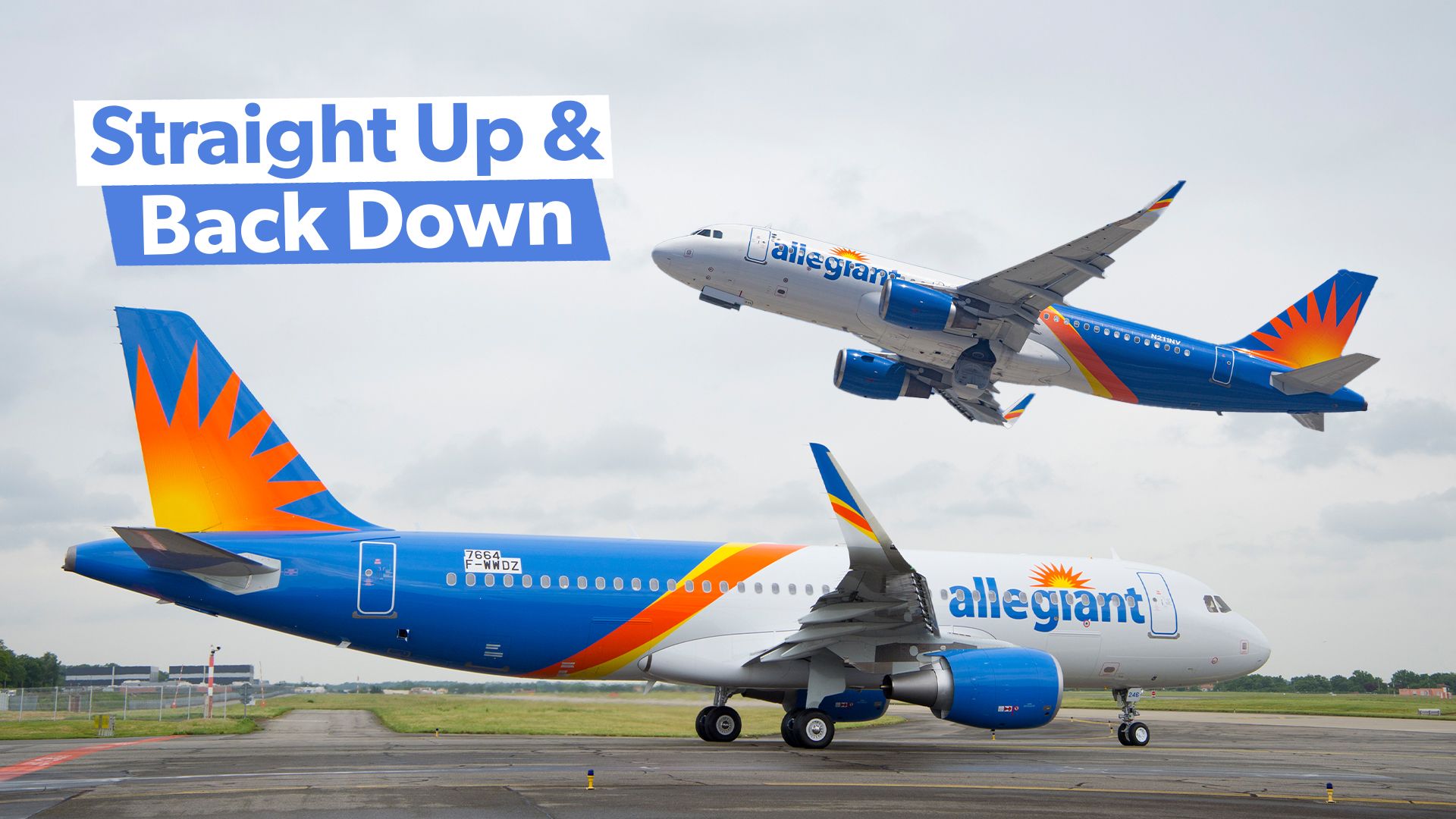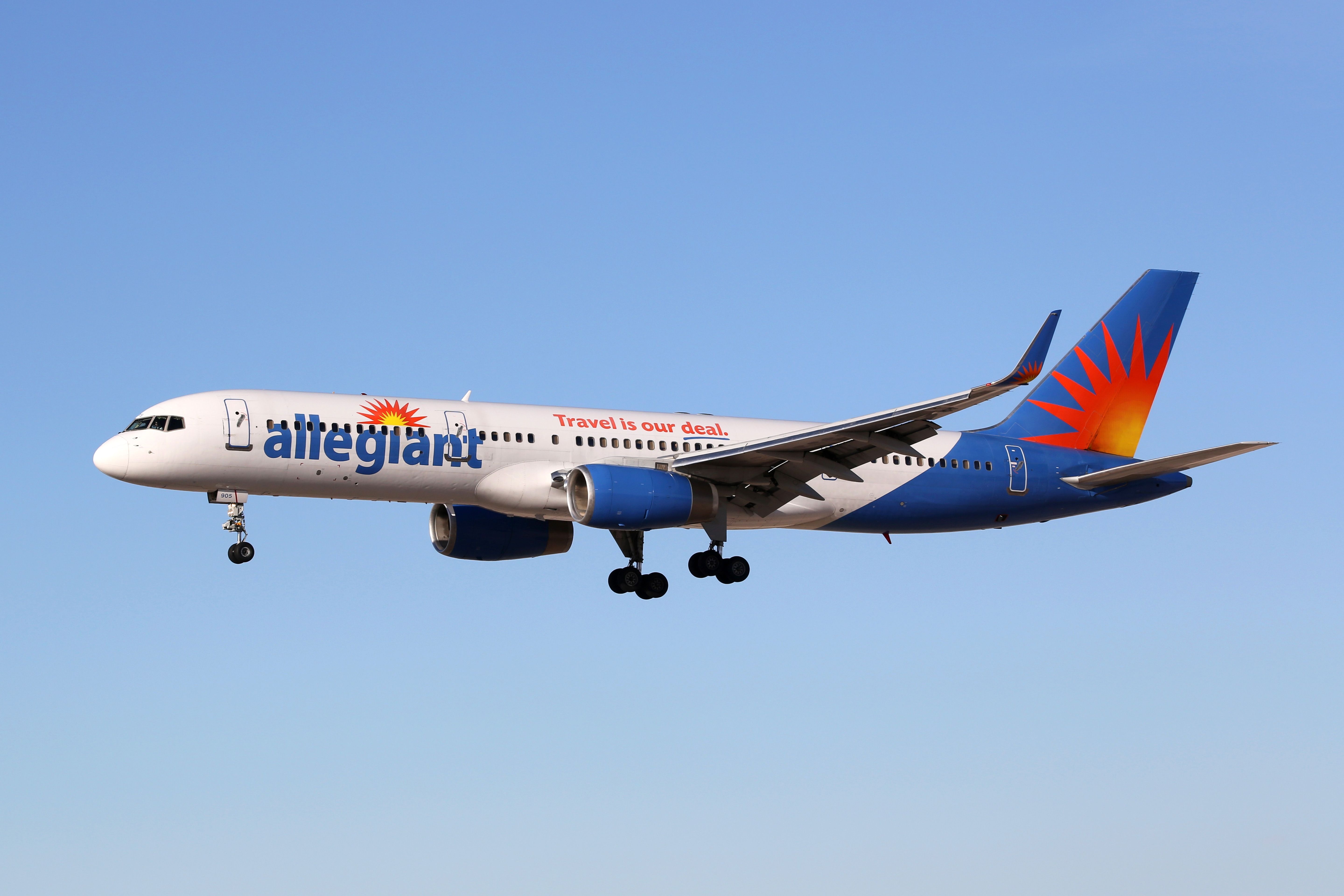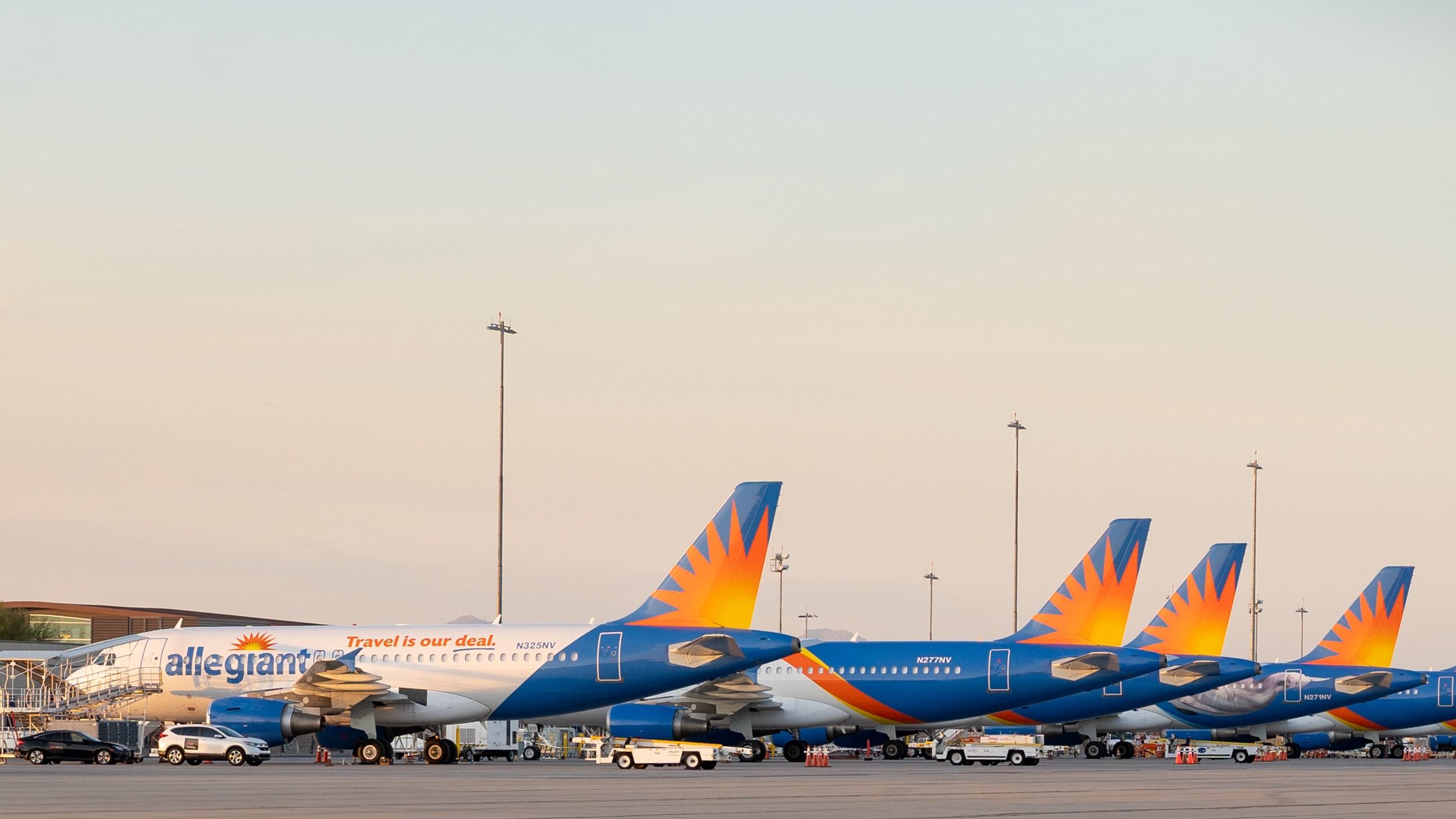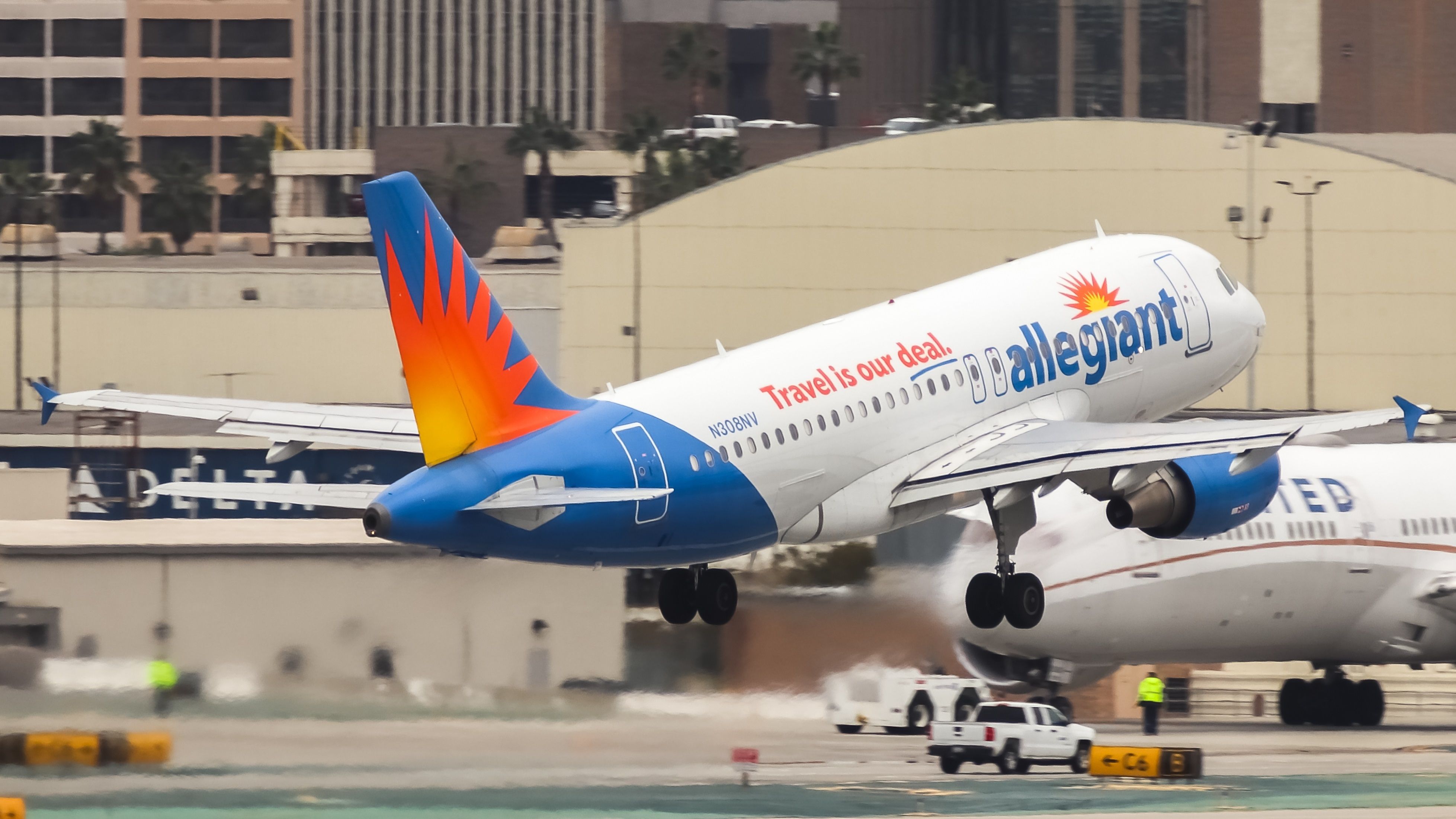Summary
- Allegiant Air connects underserved markets to popular destinations with short-haul flights under 350 miles, deviating from the traditional hub-and-spoke model.
- Allegiant’s flights support local economies and serve underserved markets, making them crucial.
- The airline’s efficient operations and niche market focus help them succeed despite lower profit margins, limited passengers, and competition.
In the landscape of budget airlines, Allegiant Air stands out with its unique business model focused on connecting underserved markets with popular vacation destinations. The airline operates a network of shorter routes that span less than 350 miles.
While less glamorous than transcontinental journeys, these routes play a crucial role in the airline’s strategy and significantly benefit travelers and regional economies. Let’s discover the nuances of Allegiant Air’s shortest routes, exploring the benefits, challenges, and overall impact of these short-haul flights.
Photo: Markus Mainka | Shutterstock
Allegiant Airlines business model
Allegiant Air has carved a niche by serving smaller airports and connecting them directly to popular leisure destinations. This approach deviates from the traditional hub-and-spoke model used by major airlines, allowing Allegiant to tap into markets with little to no competition. The airline’s focus on low-cost operations and non-daily flight schedules enables it to maintain profitability on routes that might not be viable for other carriers.
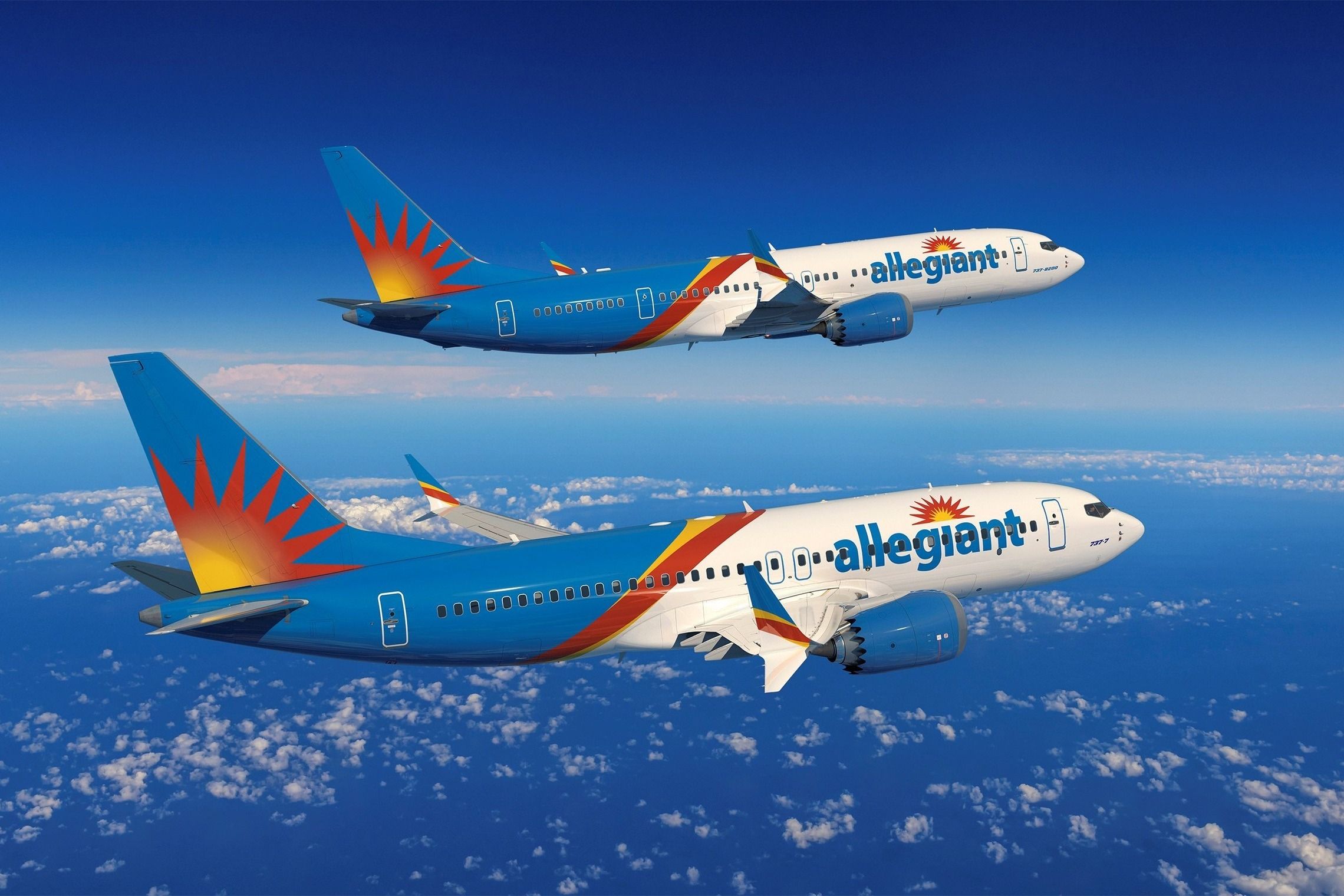
Related
Allegiant Air Boeing 737 MAX 8-200 Debut Delayed By 2 Months
However, the airline expects to expand its Boeing 737 MAX 8-200 schedule quite quickly.
Short-haul flights under 350 miles are a critical component of this strategy. These routes often link smaller cities to nearby vacation spots, providing convenient travel options for residents and supporting local tourism industries. For example, a route from Asheville, North Carolina, to Savannah, Georgia, at just 220 miles, offers a quick and affordable getaway for those looking to explore the historic coastal city.
Allegiant airline’s fleet:
|
Aircraft Type |
In Service |
Orders |
Passengers (Y+) |
Passengers (Y) |
Total Capacity |
Notes |
|---|---|---|---|---|---|---|
|
Airbus A319-100 |
34 |
— |
18 |
138 |
156 |
|
|
Airbus A320-200 |
14 |
— |
18 |
159 |
177 |
To be retired by the end of 2025. |
|
Airbus A320-200 |
78 |
2 |
— |
168 |
186 |
|
|
Boeing 737 MAX 7 |
— |
24 |
TBA |
TBA |
TBA |
Deliveries are planned to begin in 2024—option for 80 additional aircraft. |
|
Boeing 737 MAX 200 |
— |
26 |
21 |
169 |
190 |
Currently delayed |
|
Total |
126 |
52 |
— |
— |
— |
The benefits of short-haul flying
Convenience and Accessibility
One of the primary advantages of Allegiant Air’s short-haul routes is the convenience they offer travelers. Smaller airports tend to have shorter security lines and less congestion, making the travel experience smoother and more efficient.
This is particularly beneficial for families and elderly passengers who might find larger airports overwhelming. Additionally, the proximity of these routes means that travelers can reach their destinations quickly, often in less than an hour, which is ideal for weekend getaways or short business trips.
Economic impact
Short-haul flights also significantly impact the regions they serve. By connecting smaller cities to more significant tourism hubs, Allegiant helps to stimulate local economies. Increased visitor numbers lead to higher demand for hotels, restaurants, and other tourism-related businesses, generating revenue and creating jobs.
For instance, the route from Des Moines, Iowa, to Sioux Falls, South Dakota, which spans approximately 190 miles, provides convenient travel options and encourages economic activity in both cities.
Environmental considerations
While air travel is often criticized for its environmental impact, short-haul flights offer some advantages. Allegiant’s model of flying less frequently and using fuel-efficient aircraft helps mitigate some ecological concerns.
Moreover, by providing direct flights, Allegiant reduces the need for connecting flights, which can be more fuel-intensive due to multiple takeoffs and landings. However, it is essential to note that short-haul flights generally have a higher fuel consumption per mile compared to longer flights, which remains a challenge for the industry.
Challenges and limitations
Despite their benefits, short-haul routes present several challenges. One of the primary issues is the lower profit margin associated with these flights. Short distances mean aircraft spend more time on the ground than in the air, reducing overall efficiency.
Additionally, operating in smaller markets can limit the number of passengers, making it difficult to achieve high load factors. Allegiant addresses these challenges by employing a low-cost structure and optimizing flight schedules to ensure profitability.
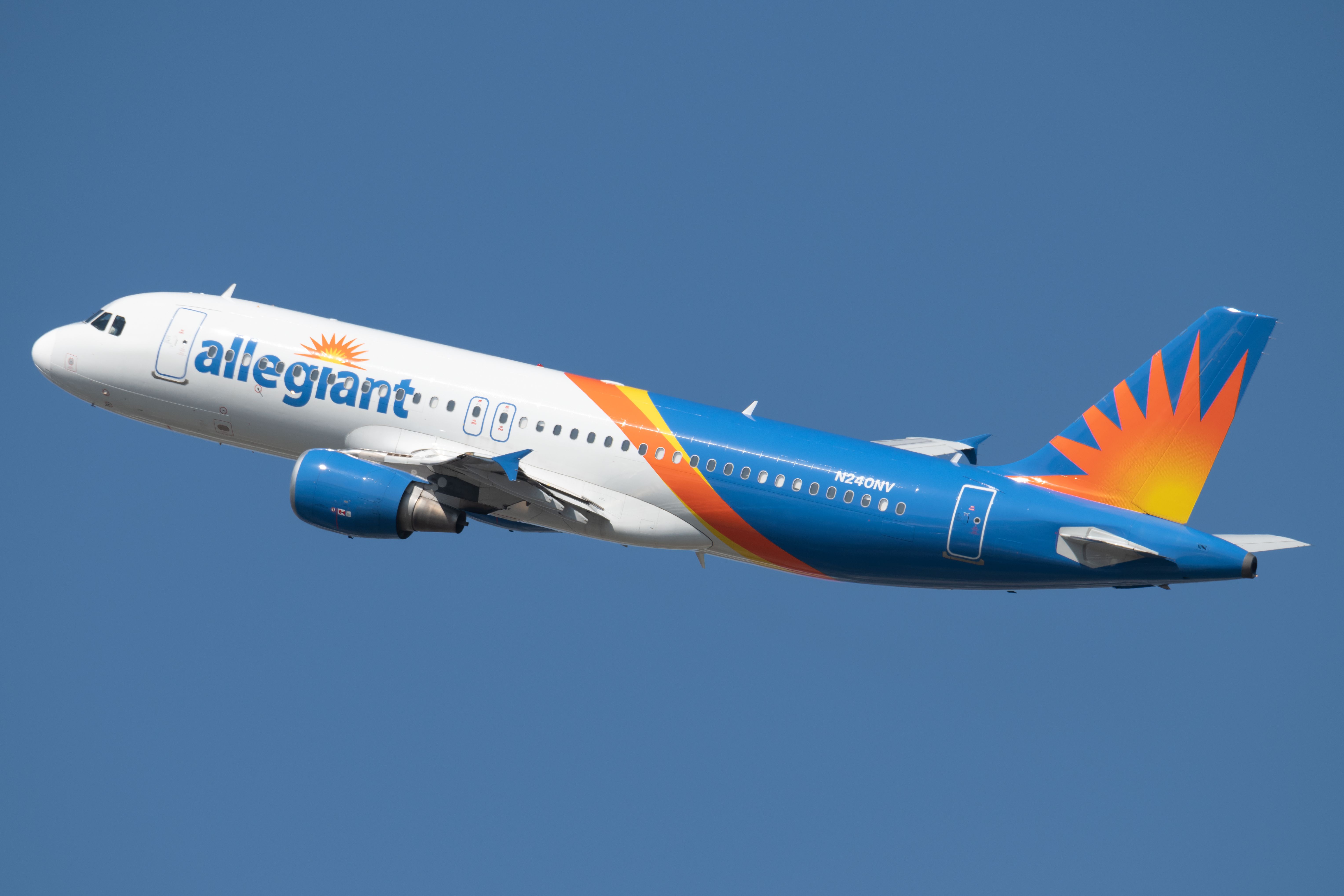
Related
Allegiant And Viva Aerobus Want DOT To Reconsider Joint Venture
Allegiant Air and Viv Aerobus have applied to the US DOT to have their alliance application reinstated and its review completed.
Another challenge is the competition from alternative modes of transportation. For routes under 350 miles, travelers often have viable options such as driving or taking a train. These alternatives can be more cost-effective and environmentally friendly, posing a threat to the viability of short-haul flights. For example, a traveler from Los Angeles to Las Vegas might drive 270 miles rather than fly, especially considering the time spent at the airport.
Photo: BCFC | Shutterstock
The most notable short-haul routes
To illustrate the impact and operation of Allegiant Air’s short-haul routes, let’s examine some specific data from early July 2024. According to Cirrium, an aviation analytics company, here are several routes that fall under the 350-mile mark:
- Las Vegas (LAS) to Provo (PVU): This 341-mile route sees two operations with 372 seats and an average of 186 seats per departure. This route highlights the strategic importance of connecting a significant tourist hub like Las Vegas with smaller markets like Provo.
- Las Vegas (LAS) to Santa Maria (SMX): At 310 miles, this route operates twice, with 312 seats, averaging 156 seats per departure. It shows Allegiant’s commitment to linking smaller Californian cities with Las Vegas.
- Key West (EYW) to Sanford (SFB): This 292-mile route operates twice and has 312 seats in total, averaging 156 seats per departure. It connects two popular Florida destinations, emphasizing convenience for tourists.
- Fresno (FAT) to Las Vegas (LAS): With 13 operations and 2,028 seats, this 258-mile route is one of the busier short-haul routes, reflecting significant demand.
- Key West (EYW) to St. Petersburg (PIE): Spanning 238 miles, this route operates three times with 468 seats, averaging 156 seats per departure. It connects two attractive Florida destinations.
Underestimated yet vital connections
Allegiant Air’s shortest routes, spanning less than 350 miles, play a vital role in the airline’s overall strategy. These flights offer convenience, support local economies, and provide a necessary service to underserved markets. 85% of Allegiant airlines’ network is also competition free, making the model very profitable.

Related
5 Unique Benefits of the Allegiant Air Allways Rewards Visa Card
The airline has recently increased its signup bonus by 40%.
While they come with their challenges, Allegiant’s efficient operations and focus on niche markets have successfully allowed the airline to integrate short-haul flights into its network. As the aviation industry continues to evolve, Allegiant’s approach to short-haul travel offers valuable insights into the potential and complexities of operating in this unique market segment.

